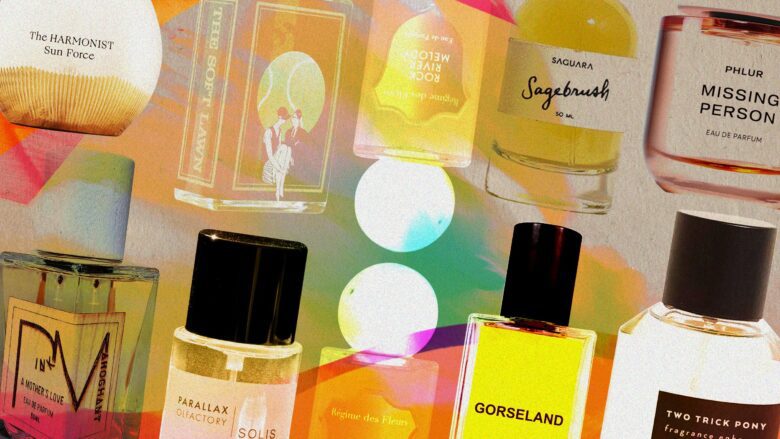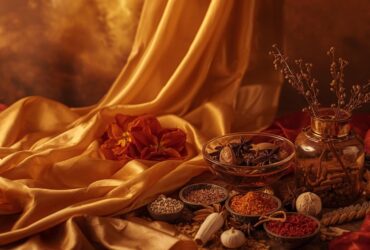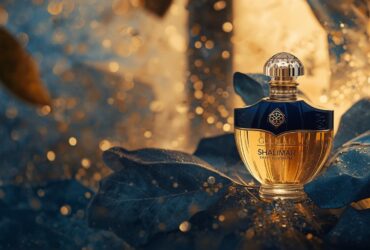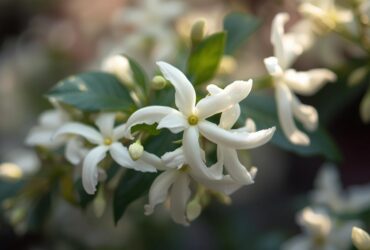Synesthesia in a Bottle: Perfumes are more than just pleasant scents; they possess the power to transport us to different realms, evoke emotions, and even trigger vivid imagery. One fascinating aspect of perfumery is the ability to create fragrances that seemingly evoke colors, a phenomenon known as synesthesia. In this article, we will delve into the intriguing world of synesthetic perfumery, exploring the techniques and artistry employed by perfumers to create these olfactory compositions that blur the boundaries between scent and color.
Understanding Synesthesia
Synesthesia is a neurological condition in which stimulation of one sensory or cognitive pathway leads to involuntary experiences in another pathway. In the case of synesthetic perfumery, it involves the association between scent and color, where perceiving a fragrance triggers a simultaneous experience of a specific color.
The Science Behind Synesthetic Perfumery
- Olfactory-Visual Correspondences
Perfumers rely on the concept of olfactory-visual correspondences to create fragrances that evoke specific colors. This concept is based on the belief that certain odor molecules have structural similarities to certain color pigments, creating a sensory connection between the two. For example, a fruity aroma might be associated with a vibrant, sunny yellow, while a deep, woody scent could be linked to a rich, earthy brown.
- Cross-Modal Perception
Cross-modal perception plays a crucial role in synesthetic perfumery. It refers to the brain’s ability to integrate information from different sensory modalities, such as smell and sight. When perfumers evoke colors through fragrances, they tap into this cross-modal perception, leveraging the brain’s ability to associate scents with visual stimuli.
Techniques of Synesthetic Perfumery
- Ingredient Selection
Perfumers carefully choose aromatic ingredients based on their olfactory profiles and their perceived color associations. They consider various factors such as the chemical composition, volatility, and intensity of the ingredients to achieve the desired synesthetic effect. For instance, floral notes like rose or jasmine might be selected for their association with delicate pastel hues.
- Layering and Blending
Creating a synesthetic fragrance involves skillful layering and blending of different scent components. Perfumers strategically combine top, middle, and base notes, each with its own olfactory and visual characteristics, to achieve a harmonious sensory experience. By carefully orchestrating the progression of scents, they can mimic the visual journey one might experience when perceiving colors.
- Visual Inspiration
Perfumers often draw inspiration from visual cues to guide their creative process. They may observe artwork, examine color palettes, or even explore natural landscapes to capture the essence of specific colors in their fragrances. This visual inspiration serves as a guiding framework for crafting the olfactory composition.
The Artistry of Synesthetic Perfumery
Synesthetic perfumery is a true art form, requiring a deep understanding of both scent and color. Perfumers must possess a highly developed sense of smell, an appreciation for visual aesthetics, and an innate ability to blend these elements seamlessly. Their expertise lies in translating abstract concepts into tangible olfactory experiences.
Synesthetic Perfumery in Practice
- Fragrance Collections
Several perfume houses have explored synesthetic perfumery as a concept, creating fragrance collections that specifically aim to evoke colors. These collections often feature a range of scents, each corresponding to a different color or a combination of colors. The packaging and marketing materials associated with these perfumes also reflect the synesthetic theme.
- Personalized Fragrances
Perfumers can also create personalized synesthetic fragrances tailored to an individual’s unique sensory associations. By understanding the person’s perception of colors and their corresponding scents, perfumers can craft a fragrance that resonates with their synesthetic experience, resulting in a truly personal and evocative scent.
Synesthetic perfumery showcases the beautiful intersection of scent and color, providing a multisensory experience that transcends traditional boundaries. Perfumers employ scientific principles, artistic techniques, and a deep understanding of human perception to create fragrances that evoke colors. Whether it’s a vibrant red, a soothing blue, or a radiant yellow, these olfactory compositions in a bottle open up a world of sensory exploration, allowing us to see with our noses and smell with our eyes.
Synesthesia in a Bottle






Leave a Reply